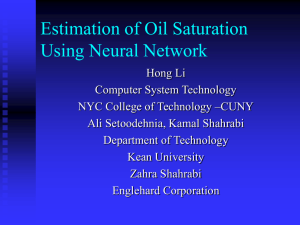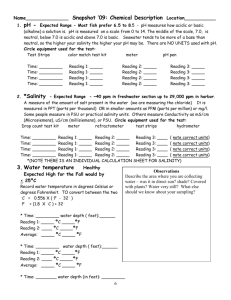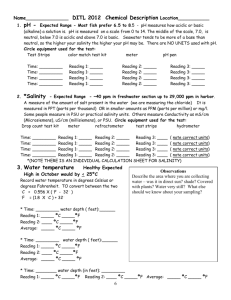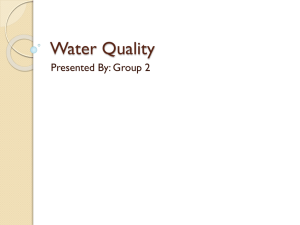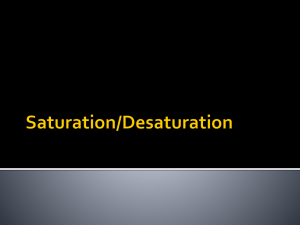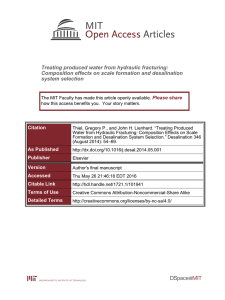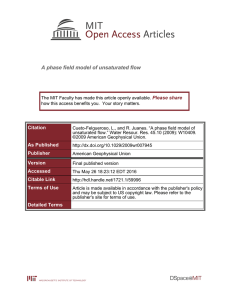Saturation-Induced Instability in Electric Power Systems:
advertisement
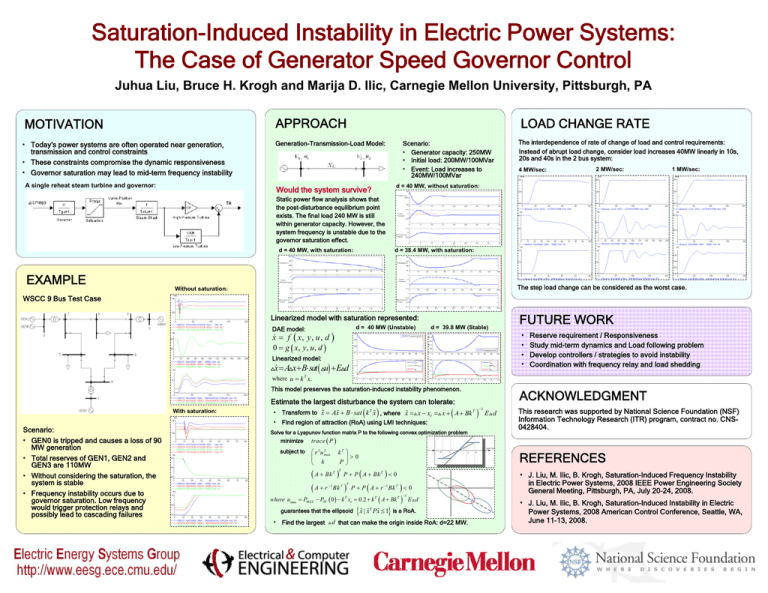
Saturation-Induced Instability in Electric Power Systems:
The Case of Generator Speed Governor Control
Juhua Liu, Bruce H. Krogh and Marija D. Ilic, Carnegie Mellon University, Pittsburgh, PA
APPROACH
MOTIVATION
• Today's power systems are often operated near generation,
transmission and control constraints
• These constraints compromise the dynamic responsiveness
• Governor saturation may lead to mid-term frequency instability
A single reheat steam turbine and governor:
LOAD CHANGE RATE
Generation-Transmission-Load Model:
Scenario:
• Generator capacity: 250MW
• Initial load: 200MW/100MVar
• Event: Load increases to
240MW/100MVar
The interdependence of rate of change of load and control requirements:
Instead of abrupt load change, consider load increases 40MW linearly in 10s,
20s and 40s in the 2 bus system:
4 MW/sec:
2 MW/sec:
1 MW/sec:
d = 40 MW, without saturation:
Would the system survive?
Static power flow analysis shows that
the post-disturbance equilibrium point
exists. The final load 240 MW is still
within generator capacity. However, the
system frequency is unstable due to the
governor saturation effect.
d = 40 MW, with saturation:
EXAMPLE
d = 38.4 MW, with saturation:
The step load change can be considered as the worst case.
Without saturation:
WSCC 9 Bus Test Case
Linearized model with saturation represented:
d = 40 MW (Unstable)
DAE model:
x = f ( x , y , u , d )
0 = g ( x, y , u , d )
d = 39.8 MW (Stable)
FUTURE WORK
•
•
•
•
Linearized model:
+x = A+x+B⋅ sat (+u) +E+d
Reserve requirement / Responsiveness
Study mid-term dynamics and Load following problem
Develop controllers / strategies to avoid instability
Coordination with frequency relay and load shedding
where u = k T x.
This model preserves the saturation-induced instability phenomenon.
Estimate the largest disturbance the system can tolerate:
With saturation:
Scenario:
• GEN0 is tripped and causes a loss of 90
MW generation
• Total reserves of GEN1, GEN2 and
GEN3 are 110MW
• Without considering the saturation, the
system is stable
• Frequency instability occurs due to
governor saturation. Low frequency
would trigger protection relays and
possibly lead to cascading failures
(
)
(
• Transform to x = Ax + B ⋅ sat k T x , where x =+ x − xe =+ x + A + Bk T
• Find region of attraction (RoA) using LMI techniques:
Solve for a Lyapunov function matrix P to the following convex optimization problem
minimize
subject to
ACKNOWLEDGMENT
)
−1
E +d
This research was supported by National Science Foundation (NSF)
Information Technology Research (ITR) program, contract no. CNS0428404.
trace ( P )
2
⎛ r 2 u max
⎜
k
⎝
kT ⎞
⎟>0
P ⎠
(
)
( A + r Bk )
A + Bk T
−1
T
T
REFERENCES
(
)
P + P A + Bk T < 0
T
(
)
)
P + P A + r − 1 Bk T < 0
(
where umax = PMAX − PSV ( 0 ) − k T xe = 0.2 + k T A + Bk T
guarantees that the ellipsoid
{ x | x
T
}
−1
E +d
Px ≤ 1 is a RoA.
• Find the largest +d that can make the origin inside RoA: d=22 MW.
• J. Liu, M. Ilic, B. Krogh, Saturation-Induced Frequency Instability
in Electric Power Systems, 2008 IEEE Power Engineering Society
General Meeting, Pittsburgh, PA, July 20-24, 2008.
• J. Liu, M. Ilic, B. Krogh, Saturation-Induced Instability in Electric
Power Systems, 2008 American Control Conference, Seattle, WA,
June 11-13, 2008.



